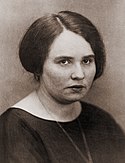| |||||||||||||||||||||||||||||||||||||||||||||||||||||||||||||||||||||||||||||||||||||
All 472 seats in the Reichstag 237 seats needed for a majority | |||||||||||||||||||||||||||||||||||||||||||||||||||||||||||||||||||||||||||||||||||||
|---|---|---|---|---|---|---|---|---|---|---|---|---|---|---|---|---|---|---|---|---|---|---|---|---|---|---|---|---|---|---|---|---|---|---|---|---|---|---|---|---|---|---|---|---|---|---|---|---|---|---|---|---|---|---|---|---|---|---|---|---|---|---|---|---|---|---|---|---|---|---|---|---|---|---|---|---|---|---|---|---|---|---|---|---|---|
| Registered | 38,374,983 ( | ||||||||||||||||||||||||||||||||||||||||||||||||||||||||||||||||||||||||||||||||||||
| Turnout | 77.4% ( | ||||||||||||||||||||||||||||||||||||||||||||||||||||||||||||||||||||||||||||||||||||
| |||||||||||||||||||||||||||||||||||||||||||||||||||||||||||||||||||||||||||||||||||||
| |||||||||||||||||||||||||||||||||||||||||||||||||||||||||||||||||||||||||||||||||||||
| This article is part of a series on the |
| Politics of Germany |
|---|
 |
Federal elections were held in Germany 4 May 1924 to elect the second Reichstag of the Weimar Republic.[1]
The elections took place in the wake of several national crises the previous year: hyperinflation, the occupation of the Ruhr, conflict between the federal and state governments, as well as the Beer Hall Putsch and German October. A national state of emergency had been declared in response to these events, which the Stresemann cabinets and first Marx cabinet had used to bring them under control to a great extent. Hyperinflation had been controlled with the institution of a new currency in November 1923, and the government was able to bring the Western Allies to the table on the issue of the Ruhr and reparations. When the state of emergency lapsed in March 1924 and, faced with parliamentary opposition to several government decrees, Chancellor Wilhelm Marx requested the dissolution of the Reichstag for new elections.[2][3][4]
The elections resulted in losses for the parties of the moderate centre who had been part of government in the previous year: the Catholic Centre Party, German People's Party (DVP), and German Democratic Party (DDP). The Social Democratic Party (SPD) suffered particularly severe losses. Parties of the far right and far left made the most advances: the radical nationalist German National People's Party (DNVP) very nearly surpassed the SPD, while the Communist Party won 13%, and the National Socialist Freedom Movement (NSFP), an alliance of völkisch nationalists and the Nazi Party, won 6.5%.[4]
No clear majority could be formed in the new Reichstag. Wilhelm Marx remained Chancellor in a minority cabinet with the hope of bringing the DNVP into government. The following months were dominated by debate over the Dawes Plan, which would set out a payment plan for reparations. Its passage required a two-thirds majority due to the constitutional amendments necessary, meaning both SPD and DNVP support was needed. The former supported the plan, while the latter was deeply divided: after a controversial session, about half of the DNVP delegation voted in favour, enough to secure its passage. With this major issue resolved, the cabinet negotiated for the DNVP's entry but without success. With no prospect of a stable government, the Reichstag was dissolved in October for fresh elections.[4]
Cite error: There are <ref group=lower-alpha> tags or {{efn}} templates on this page, but the references will not show without a {{reflist|group=lower-alpha}} template or {{notelist}} template (see the help page).
- ^ Dieter Nohlen & Philip Stöver (2010) Elections in Europe: A data handbook, p762 ISBN 978-3-8329-5609-7
- ^ Nohlen & Stöver, p790
- ^ Ogg, Fredericx A.; Shepard, Walter James (1924). "The German Elections". American Political Science Review. 18 (3): 528–533. doi:10.2307/1944174. ISSN 0003-0554. JSTOR 1944174. S2CID 145608013.
- ^ a b c Kolb, Eberhard (2004). The Weimar Republic. Translated by Falla, P. S.; Park, R. J. New York City: Routledge. p. 72-73. ISBN 0415344417.








